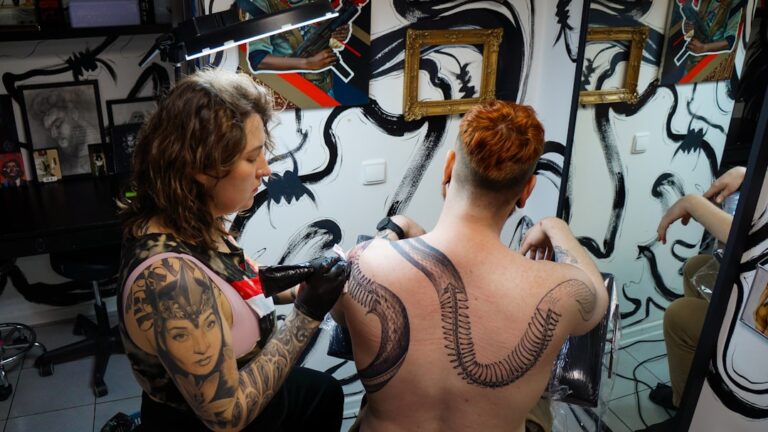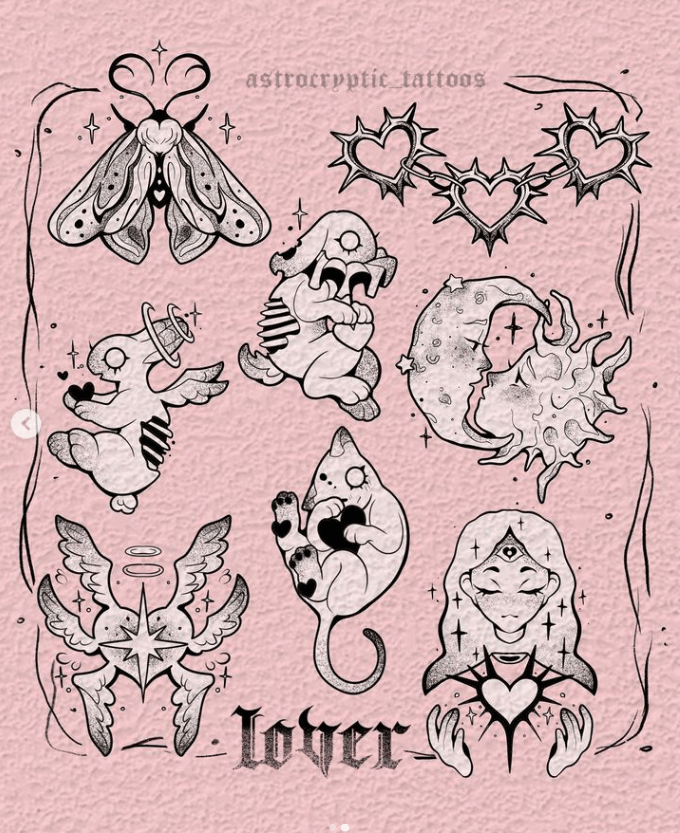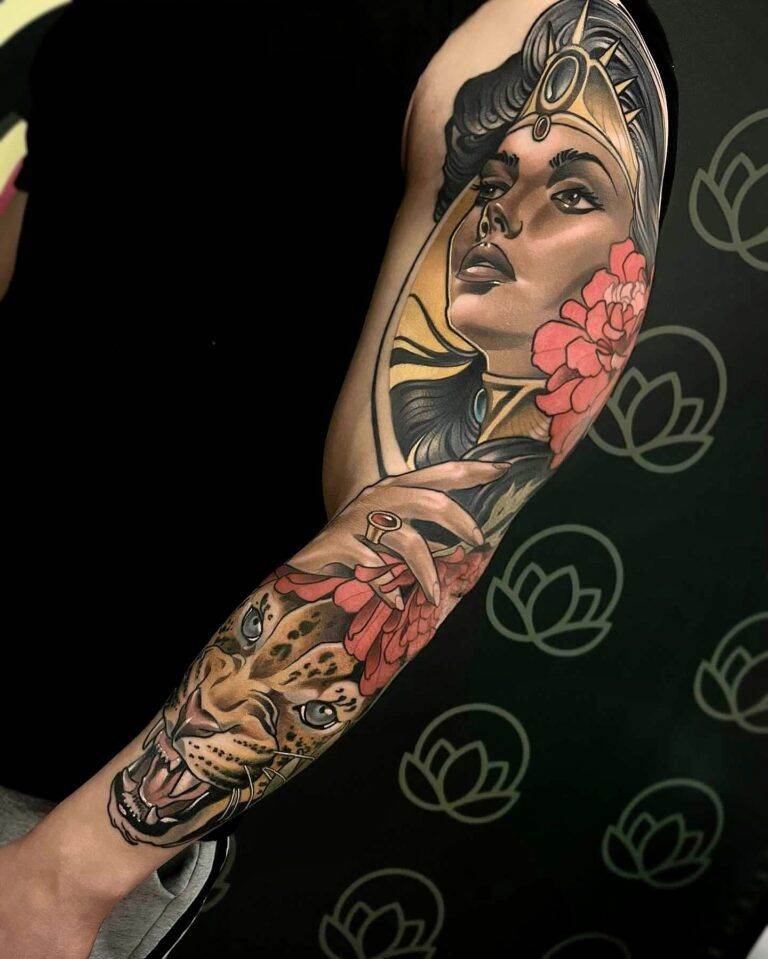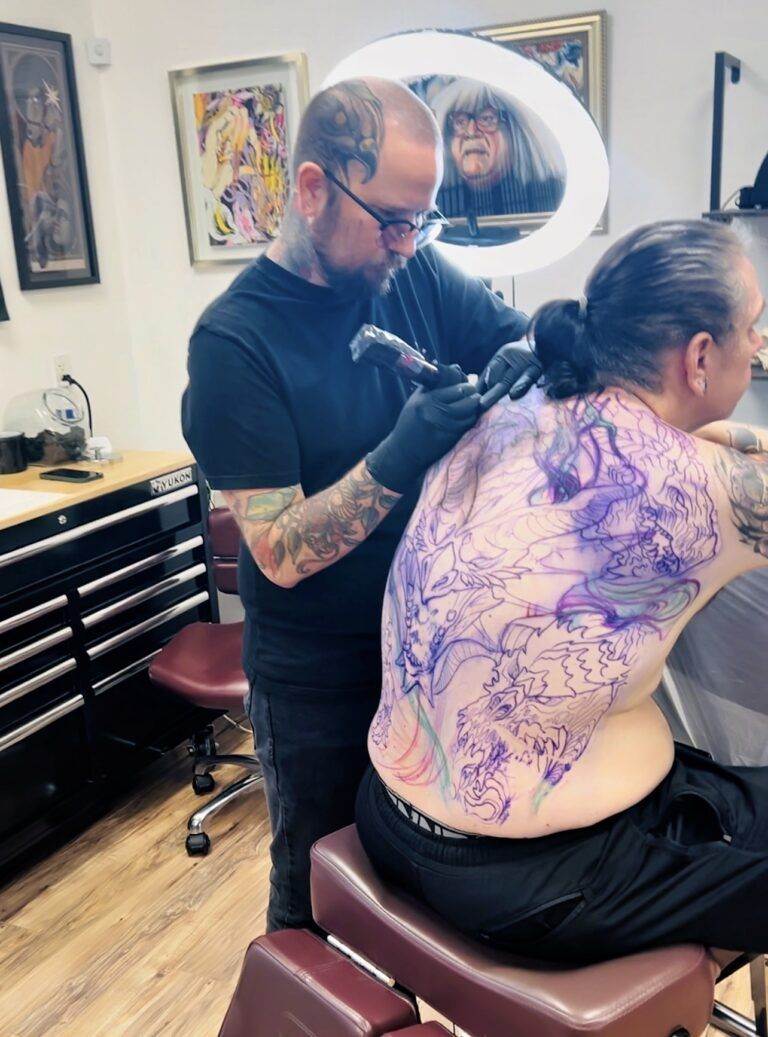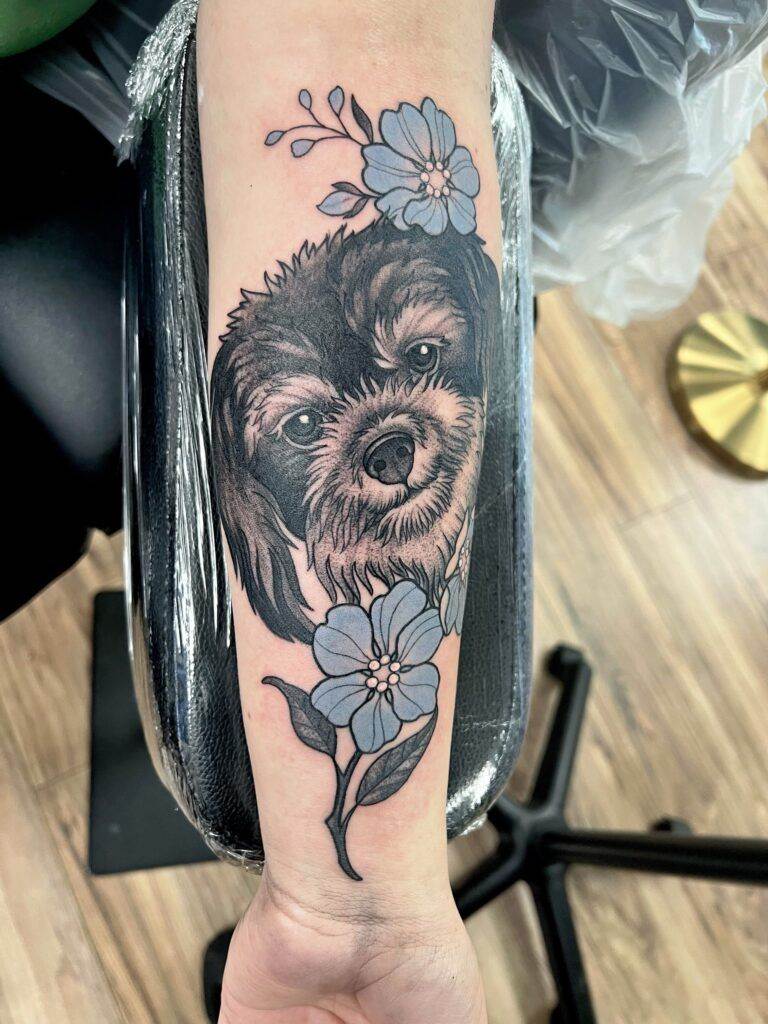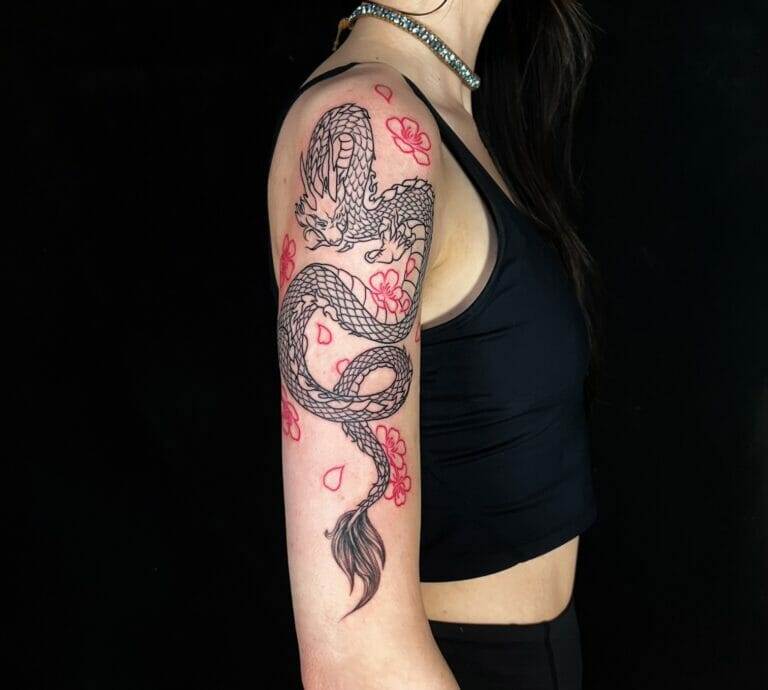Getting Started with Your Vision
Understanding Your Tattoo Idea
When embarking on the journey of getting a tattoo, the first step involves deeply understanding your tattoo idea. Tattoos are more than mere adornments; they carry personal significance, stories, and memories. It’s crucial to spend some time reflecting on what the tattoo represents to you. Ask yourself questions such as:
- What emotion or story do I want to convey?
- Is there a specific symbol or image that resonates with me?
- How will this tattoo fit into my lifestyle and future?
Engaging in this self-reflection will help solidify your vision and ensure that the design will be something you cherish for years to come.
Researching Tattoo Styles
Once you’ve clarified your tattoo idea, it’s time to explore various tattoo styles that can bring your vision to life. There is an abundance of artistic styles to choose from, each offering a unique aesthetic that can enhance the meaning of your tattoo. Here are some popular styles to consider:
- Traditional: Characterized by bold outlines and bright colors, traditional tattoos often depict iconic images such as roses or skulls.
- Watercolor: This style utilizes splashes of bright color and fluid brushstroke techniques, giving the appearance of a painted canvas.
- Geometric: Comprising precise shapes and lines, geometric tattoos are often minimalistic and offer a modern look.
- Realism: Capturing lifelike images, realism tattoos require a skilled artist and can depict portraits or intricate designs.
As you research, create a mood board by collecting images and references that inspire you. This visual compilation will serve as a great reference point during discussions with your tattoo artist, ensuring you articulate your vision clearly. The more informed you are, the better equipped you’ll be to make decisions that resonate with your personal style and values.
Finding the Right Tattoo Artist
Asking for Recommendations
Now that you have a clear vision for your tattoo, the next crucial step is finding the right tattoo artist who can bring your idea to life. One of the best ways to start this search is by asking for recommendations from friends, family, or colleagues who have tattoos. Their personal experiences can provide invaluable insights into the quality of artistry, professionalism, and hygiene practices of various artists. Consider posing questions such as:
- How was your overall experience?
- Did you feel comfortable during the process?
- Was the artist open to discussing design modifications?
Gathering recommendations facilitates a sense of trust, making it easier to narrow down potential artists who align with your vision.
Reviewing Portfolios
With a list of potential artists in hand, the next step is to review their portfolios. An artist’s portfolio is a showcase of their work, allowing you to assess their style, technique, and artistic versatility. When evaluating portfolios, consider the following:
- Consistency: Does the artist maintain a consistent quality across their work, indicating mastery of their craft?
- Variety: Are there different tattoo styles represented? This reveals the artist’s technical range and flexibility to accommodate your design.
- Finishing Touches: Pay attention to the detailing and overall finish. Well-executed line work and color saturation can distinguish between average and exceptional tattoos.
Take time to visit artists in person, if possible, and discuss your vision while reviewing their portfolios. This interaction not only allows you to gauge their passion and enthusiasm for your idea but also builds a rapport that is essential for a collaborative tattooing experience. A solid foundation of trust and clarity with your chosen artist will ensure the outcome aligns with your expectations and dreams.
Assessing Artist Skill and Technique
Evaluating Line Work
After narrowing down your list of potential tattoo artists, the next step is to assess their skill and technique to ensure they can effectively execute your vision. One of the most critical aspects of a tattoo is the line work. Clean lines lay the foundation for a tattoo’s overall aesthetic and longevity. When evaluating an artist’s line work, consider the following:
- Precision: Are the lines smooth and consistent in thickness? Look for tattoos that exhibit sharp outlines without any wavering or blurriness.
- Clarity: Good line work should be clear and legible, especially for intricate designs. It’s important to evaluate how the artist handles fine details.
- Integrity: Consider how the lines hold up over time. Watch for healed tattoo photos to see how well the lines maintain their integrity after the healing process.
An artist skilled in line work ensures that your tattoo will look just as good years down the road as it does on the day it’s inked.
Examining Color Saturation
In addition to line work, examining an artist’s color saturation is vital in assessing their skill. Effective use of color can elevate a tattoo from good to stunning. When reviewing the artist’s body of work for color saturation, keep the following points in mind:
- Vibrancy: Are the colors bright and true to their intended hues? Vibrant colors can make tattoos pop and add depth.
- Evenness: Watch for consistent saturation across the entire piece. Uneven color can lead to a patchy appearance that diminishes the tattoo’s impact.
- Blending Techniques: If the design incorporates gradients or shading, evaluate how well the artist manages the transitions between colors. Smooth blending can enhance the overall visual appeal.
By thoroughly assessing both line work and color saturation, you can confidently select an artist whose technical skills align with your tattoo expectations, ensuring vibrant and beautifully crafted artwork that you can proudly wear.
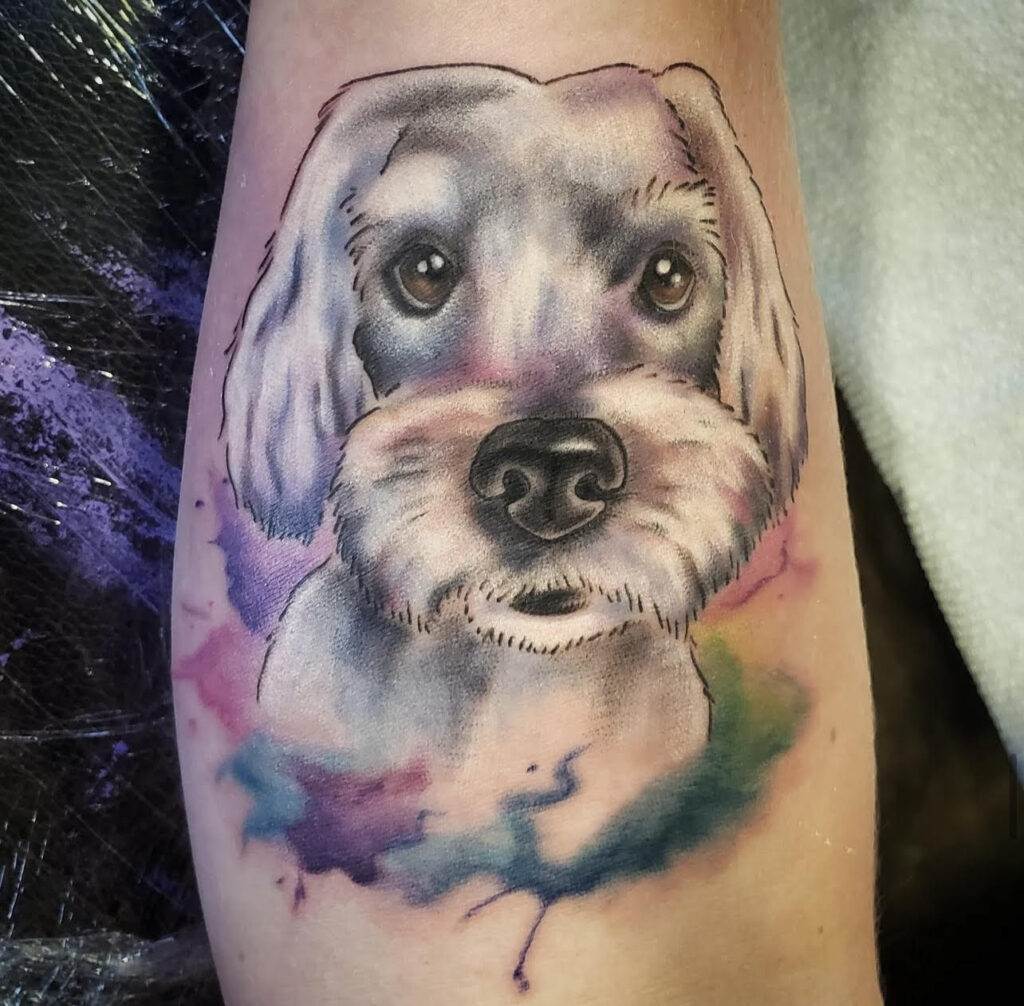
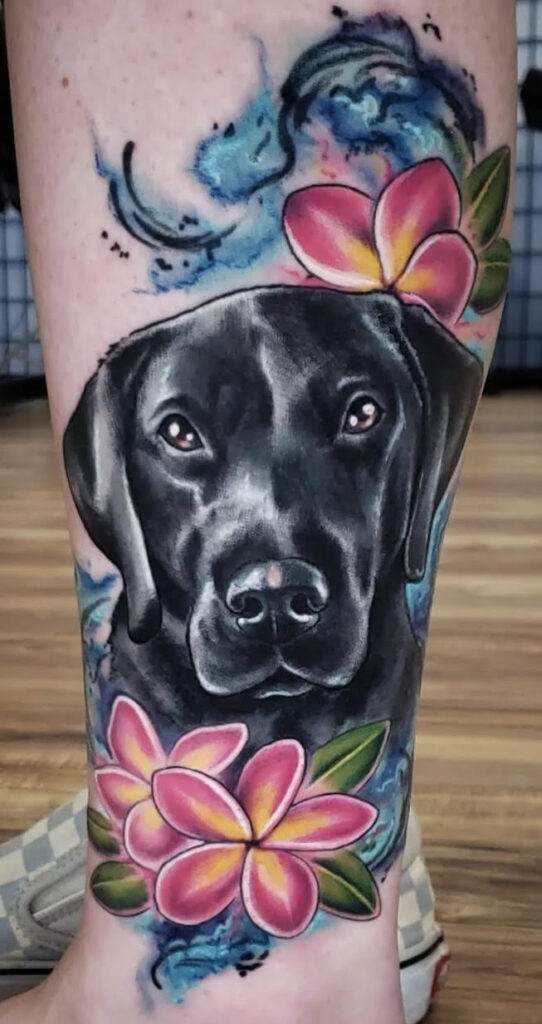
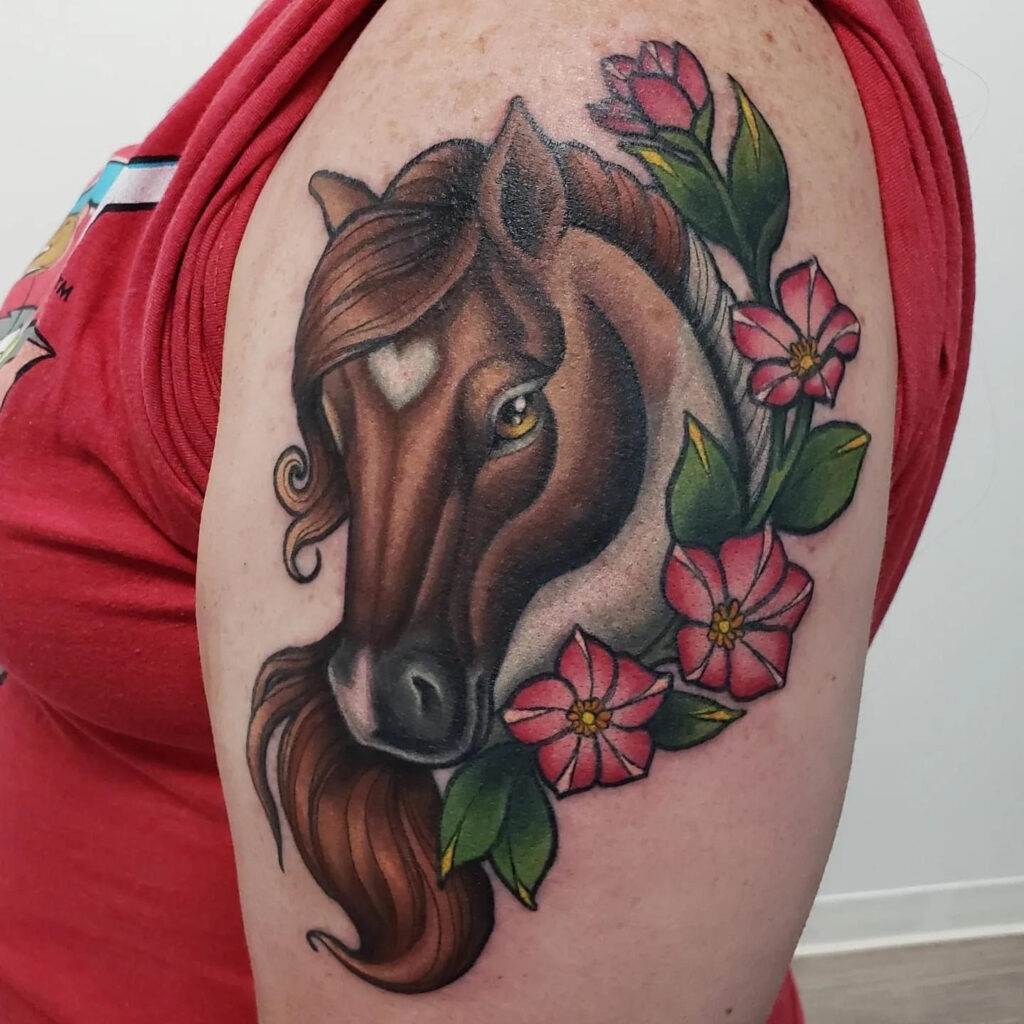
Considering Artist Experience
Reviewing Years in the Industry
Once you’ve evaluated an artist’s skill and technique, another essential factor to consider is their experience in the tattoo industry. Years of hands-on practice not only build an artist’s confidence but also refine their ability to tackle various challenges that might arise during the tattooing process. When reviewing an artist’s experience, consider these elements:
- Length of Time: How many years has the artist been tattooing? A longer tenure often signifies a wealth of experience in both artistry and client interactions.
- Continuing Education: Has the artist participated in workshops or conventions? Regularly updating their skills by networking and learning from other professionals is a hallmark of dedicated artists.
- Industry Reputation: Often, a well-known artist has taken years to build a solid reputation, indicating a consistent level of quality and client satisfaction.
These factors contribute to an artist’s ability to effectively execute your tattoo vision while ensuring a positive experience.
Assessing Specialization Areas
In addition to experience, it’s crucial to assess the artist’s specialization areas. Tattooing encompasses a wide range of styles and techniques, and many artists develop expertise in specific niches. To ensure your tattoo aligns with your vision, take the following points into account:
- Style Mastery: Is the artist known for a particular style, such as realism, traditional, or geometric? Specialization can significantly impact the outcome as artists often excel in designs they are passionate about.
- Portfolio Examples: Review their portfolio for pieces that align with your desired style. This can provide insight into their capability to replicate a specific aesthetic successfully.
- Client Reviews: Look for testimonials that highlight the artist’s expertise in the style you are interested in. Satisfied clients often share their experiences, detailing the artist’s strengths and ability to meet design expectations.
By considering both the years of experience and specialization areas of your chosen tattoo artist, you can feel more confident that your tattoo will be executed with the skill and artistry it deserves.
Communication and Collaboration
Discussing Design Ideas
Having selected the right tattoo artist with the requisite experience and skill, the next vital step is to effectively communicate and collaborate on your design ideas. This part of the process can really shape the outcome of your tattoo, transforming your vision into a beautiful reality. Start by being as open and detailed as possible about your ideas. You might want to consider:
- Visual References: Bring along images or symbols that resonate with your concept. This visual aid can provide clarification and ensure you and your artist are on the same page.
- Concept Exploration: Don’t hesitate to explore different aspects of your idea. Ask your artist for their input. They may suggest modifications that enhance the design or make it more suitable for tattooing.
- Theme and Meaning: Share the story or meaning behind your idea. This context can guide the artist in capturing the essence of your vision in the design.
Engaging in this discussion fosters a sense of collaboration, making the artist feel valued and involved in the creative process.
Providing Clear Feedback
Once the artist presents initial sketches or concepts based on your discussions, providing clear and constructive feedback is crucial. Effective feedback enhances collaboration and leads to a more satisfactory outcome. Focus on the following points:
- Be Respectful and Specific: Express what you love about the design while also articulating any adjustments or changes you envision. For example, instead of saying, “I don’t like this,” try, “Can we change the color of this section to match my initial idea?”
- Stay Open-Minded: While it’s important to communicate your preferences, remain open to the artist’s suggestions as well. They bring their expertise and creative insights to the table, which can improve the design.
- Visual Comparisons: If possible, show examples of what you envision. A picture is worth a thousand words, and visual comparisons can eliminate ambiguity in your feedback.
By fostering open, respectful communication with your artist, you set the stage for a successful tattoo experience, culminating in an artwork that reflects your vision and carries your story with pride.
Budgeting for Your Tattoo
Understanding Pricing Factors
Once you have a well-defined design and a selected artist, it’s essential to turn your attention to budgeting for your tattoo. Understanding the pricing factors is key to preparing financially for this artistic investment. Several elements can influence the cost of a tattoo, including:
- Artist Experience and Skill: More experienced and reputable artists often charge higher rates due to their craftsmanship and portfolio. You may be paying for the quality of work and assurance.
- Tattoo Size and Complexity: Larger and more intricate designs naturally cost more. A small, simple tattoo will be more affordable than a sprawling piece that requires considerable detail and time.
- Location on the Body: Some areas are more challenging to tattoo, and artists may factor this into their pricing. Areas with more sensitive skin or public visibility can sometimes command higher fees.
- Time Required: Many artists charge by the hour. The total duration of your session will greatly influence the final cost.
Having a clear understanding of these pricing factors will help you gauge the expected investment for your tattoo.
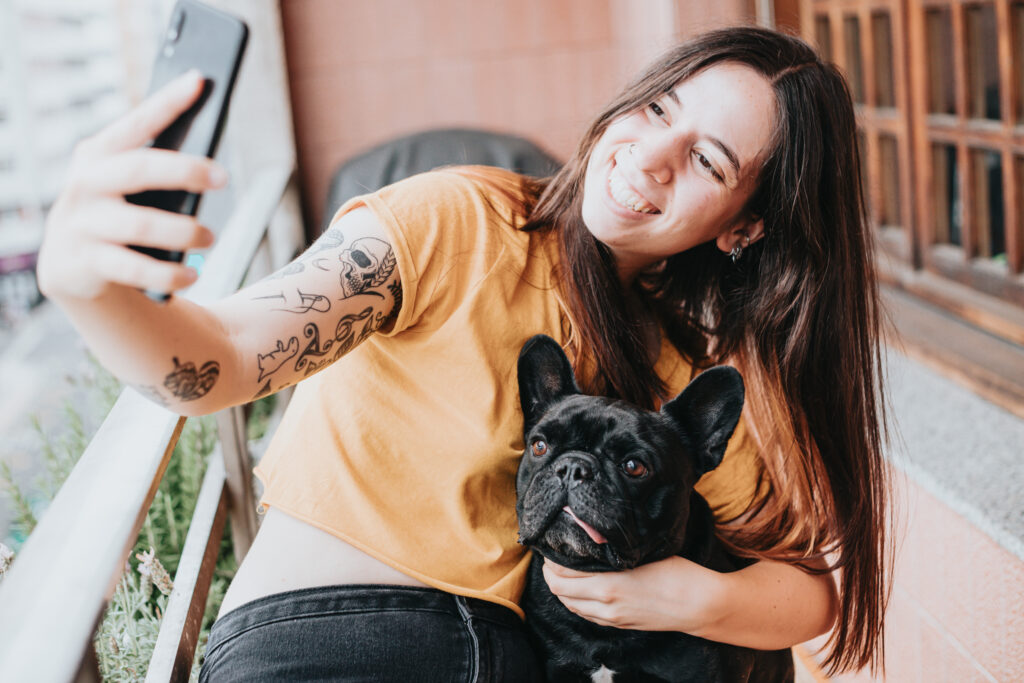
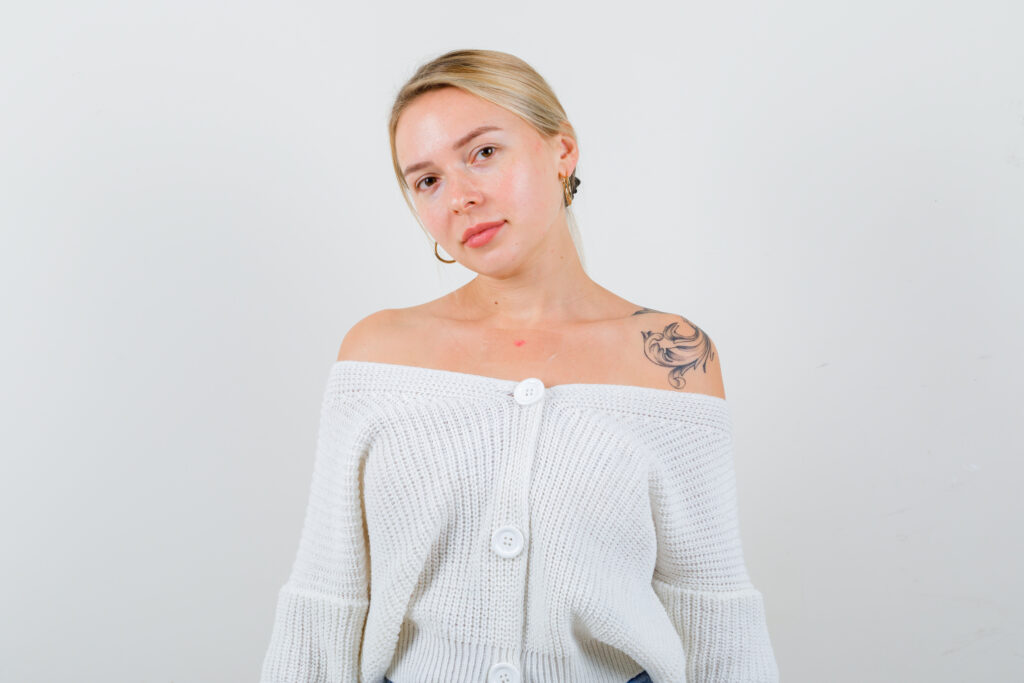

Planning for Additional Costs
In addition to the base price of the tattoo, it’s important to anticipate additional costs to ensure a seamless budget experience. Consider these potential expenses:
- Consultation Fees: While many artists offer free consultations, some may charge a fee, particularly if they provide extensive design work for you.
- Aftercare Products: After getting your tattoo, purchasing quality aftercare products, such as specialized ointments and moisturizers, is crucial to promote healing.
- Touch-Up Sessions: Sometimes, tattoos might require a touch-up after healing, particularly if the colors have faded or lines appear less crisp. Factor this into your budget.
By meticulously planning and understanding both the expected tattoo costs and additional expenses, you can approach your tattoo journey with confidence. This foresight allows you to enjoy the creative process without anxiety, ensuring that your new tattoo remains a cherished piece of art for years to come.
Scheduling Your Tattoo Appointment
Availability and Wait Times
With your budget in place and a concrete design in mind, it’s now time to schedule your tattoo appointment. One of the first things to consider is the availability of your chosen artist and the associated wait times. This can vary significantly depending on several factors:
- Artist Popularity: Highly sought-after artists may have lengthy waitlists due to high demand. Be prepared for the possibility of scheduling a few weeks, or even months, in advance.
- Day and Time Preferences: If you are looking to book an appointment during peak times, like weekends, you may encounter longer wait times. Opting for mid-week slots may result in increased availability.
- Last-Minute Appointments: While it’s sometimes possible to secure a last-minute spot if there are cancellations, this is often unpredictable. It’s generally best to plan ahead to secure your preferred date.
Knowing what to expect regarding wait times can help you arrange your schedule accordingly, ensuring you’re prepared for your tattoo experience.
Booking Ahead for Special Events
If you have a special event on the horizon—be it a wedding, anniversary, or milestone celebration—booking your tattoo appointment well in advance is a smart strategy. Here are a few tips for managing your timeline effectively:
- Timing: Aim to schedule the tattoo at least a few months before the event. This allows ample time for healing, which can take 2-3 weeks, depending on the size and placement of the tattoo.
- Flexibility: If your event falls within peak seasons (such as holidays), be flexible with your date and time preferences to secure an appointment.
- Consult with Your Artist: Discuss your event with your artist during the consultation phase. They can offer insight on the ideal timeline based on their experience with similar clients.
By effectively scheduling and planning ahead for your tattoo appointment, you can confidently navigate your tattoo journey, ensuring you look and feel your best when the time for your special event arrives.

